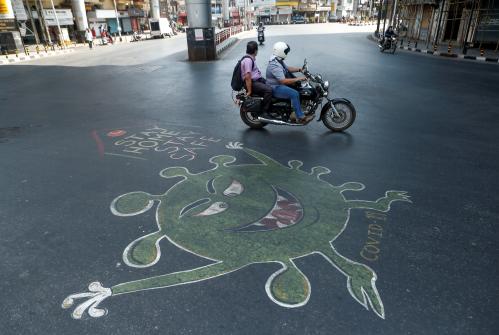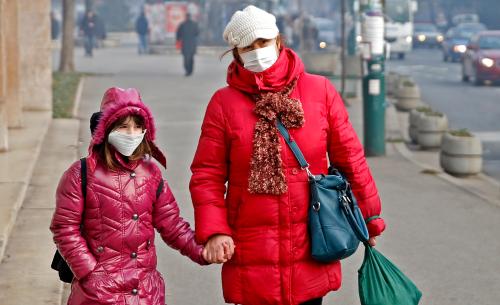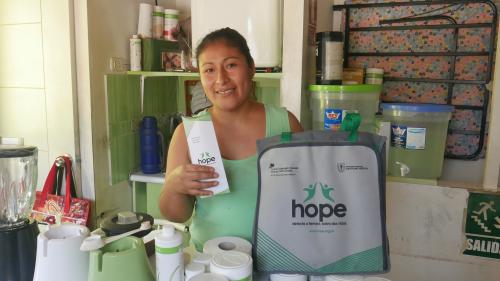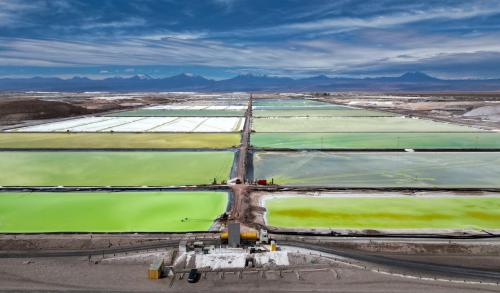On February 20, the World Bank and the Coalition for Epidemic Preparedness Innovations (CEPI), which funds development of epidemic vaccines, cohosted a global consultation on funding the development and manufacturing of COVID-19 vaccines. We wrote a working paper to guide the consultation, which we coauthored with World Bank and CEPI colleagues. The consultation led to the launch of a COVID-19 vaccine development task force that is now working on how to finance the development and manufacturing of vaccines for global access.
An effective vaccine will both prevent people getting COVID-19 and curb transmission. Without a safe, effective, and globally accessible vaccine, the COVID-19 pandemic will continue to threaten lives and livelihoods.
Efforts to develop COVID-19 vaccines have been exceptionally fast—a vaccine could be available in as short as 12-18 months. No other vaccine has ever come close to being developed so rapidly. Overall, the World Health Organization notes that 70 COVID-19 vaccines were under development as of April 4, with three candidates already being tested in clinical trials (as of April 11):
- The first phase 1 trial of a vaccine candidate, supported by the U.S. National Institutes of Health and CEPI, began on March 16, 2020 in Seattle. This trial was launched just 63 days after China shared the genetic code of SARS-CoV-2, the virus that causes COVID-19.
- Two days after the launch of the trial in Seattle, a trial in China began.
- A third phase 1 trial, supported by the Bill & Melinda Gates Foundation and CEPI, began in Philadelphia and Kansas City, on April 6, 2020.
As nobody knows which vaccines are going to work, it is important to run multiple vaccine development efforts in parallel to ensure that a vaccine will be available in 12-18 months. However, making COVID-19 vaccines available is not only a scientific challenge. Previous health emergencies, such as the 2009 swine flu pandemic and the 2014 Ebola outbreak in West Africa, have shown that it can sometimes be difficult to organize global collective action.
While there have been many remarkable examples of countries coming together to help tackle COVID-19, including new scientific partnerships, the global COVID-19 response has also at times been hindered by a lack of international collaboration. Rich countries have monopolized supplies and equipment, including face masks and medicines used for treating patients in intensive care units (e.g. antibiotics, sedatives), and they are already trying to put in place monopoly agreements with potential manufacturers of COVID-19 vaccines.
Developing and manufacturing a COVID-19 vaccine at global scale in 12-18 months requires urgent collective action from governments, industry, academia, foundations, multilaterals, and global health partnerships. This endeavor cannot afford any delays. All stakeholders involved should do everything feasible to reduce vaccine development timelines and to collectively contribute to ending the pandemic. In particular, there are five key areas in which we need collective action.
1. Funding must be rapidly mobilized for vaccine development and deployment. CEPI aims to mobilize $2 billion to make three COVID-19 vaccines available to the point at which they can be mass manufactured and deployed. Our working paper lays out how the $2 billion can be mobilized. Given the enormous health, social, and economic consequences of COVID-19, including a potential global economic loss of US$ 1 trillion in 2020, there is a strong case for all governments to invest in vaccines. In addition to direct contributions by governments and philanthropists, innovative finance mechanisms should be used to fund COVID-19 vaccines, particularly vaccine bonds and advanced market commitments.
A bond structure backed by high-income countries would allow money to be raised in the capital markets. Such a mechanism already exists. The International Finance Facility for Immunization (IFFIm) raises funds with vaccine bonds, which turn long-term contributions by donors into available (“frontloaded”) cash. IFFIm was created to support Gavi, the Vaccine Alliance (Gavi), the main financier of vaccine programs in low- and middle-income countries. IFFIm could also be used to fund CEPI’s vaccine development efforts.
Advanced market commitments (AMCs) are another useful instrument for the COVID-19 response. With AMCs, donors make funding commitments to vaccine manufacturers and, in exchange, companies sign a legally binding commitment to provide the vaccines at a price affordable to low- and middle-income countries. Advanced purchase commitments are a similar instrument. For example, based on a prepayment made by Gavi, Merck committed to create a stockpile of its Ebola vaccine. Gavi’s board expressed support for the use of Gavi’s IFFIm and AMC to improve COVID-19 vaccine development and access.
2. Collective action is needed to build large-scale manufacturing capacity for COVID-19 vaccines. As Bill Gates emphasized in a recent op-ed, “Creating a vaccine is only half the battle. To protect Americans and people around the world, we’ll need to manufacture billions of doses.” The Bill & Melinda Gates Foundation pledged to support the manufacturing of seven possible COVID-19 vaccines. Producing billions of doses will require billions of dollars and a coordinated use of financial instruments, including grants, concessional loans, and advanced purchase commitments. All vaccine developers receiving public funds must be prepared to support the necessary technology transfer arrangements to manufacturers worldwide.
3. We need to ensure fair global access. On behalf of the taskforce, we recently made the case for a worldwide allocation system that is fair, transparent, and tailored toward ending the pandemic. Vaccines purchased through the system should be free at the point of care worldwide for prioritized segments of the population, with national allocations determined through a fair and objective process. It would make sense, for example, for the initial doses to go first to health workers and to countries that have an uncontrolled epidemic, then to the elderly and medically vulnerable, and finally to the whole population. We cannot rely on markets or first-come, first served approaches, and must avoid a situation in which COVID-19 vaccines end up in just a handful of countries— this outcome would be a recipe for disaster, resulting in continued transmission of the virus across the globe.
4. To make a system for global access work, we will need well-funded purchasing agents to ensure that quality-assured vaccines reach those most in need in a timely manner. Gavi will have an important role in procuring and distributing vaccines to the poorest countries. Gavi’s replenishment takes place in 2020 and it is important that Gavi is fully funded. However, Gavi—and potentially other mechanisms, such as the Global Fund to Fight Aids, Tuberculosis and Malaria (the Global Fund)—will need substantial additional resources to purchase COVID-19 vaccine for the world’s poorest countries.
5. Investments for vaccine development and manufacturing should proceed in tandem with building national systems for delivery of vaccines, for example, using the domestic financing and external financing from the World Bank Group’s $14 billion COVID-19 Fast Track Facility and reallocations from the Global Fund, Gavi, and Global Financing Facility grants for service delivery.
Overall, developing a COVID-19 vaccine available to everyone worldwide is a critical priority for bringing the pandemic to an end. A COVID-19 vaccine that is developed, licensed, manufactured, and delivered at a global scale in 12-18 months would be an unprecedented achievement. Strong global collective action is critical to achieve this goal and to end the pandemic.








Commentary
Funding the development and manufacturing of COVID-19 vaccines: The need for global collective action
April 24, 2020